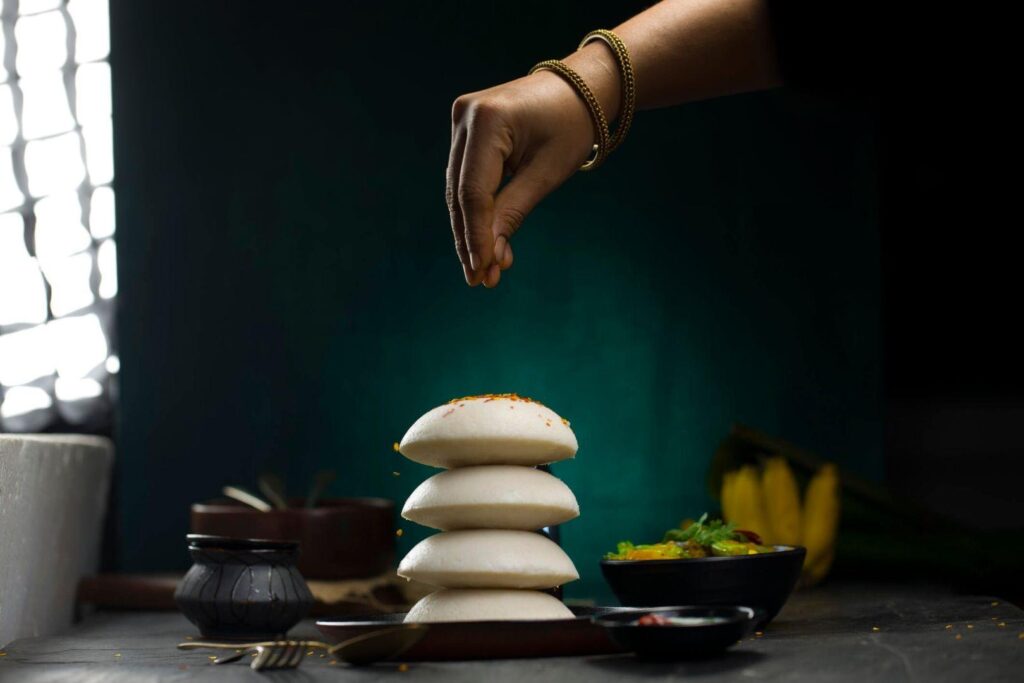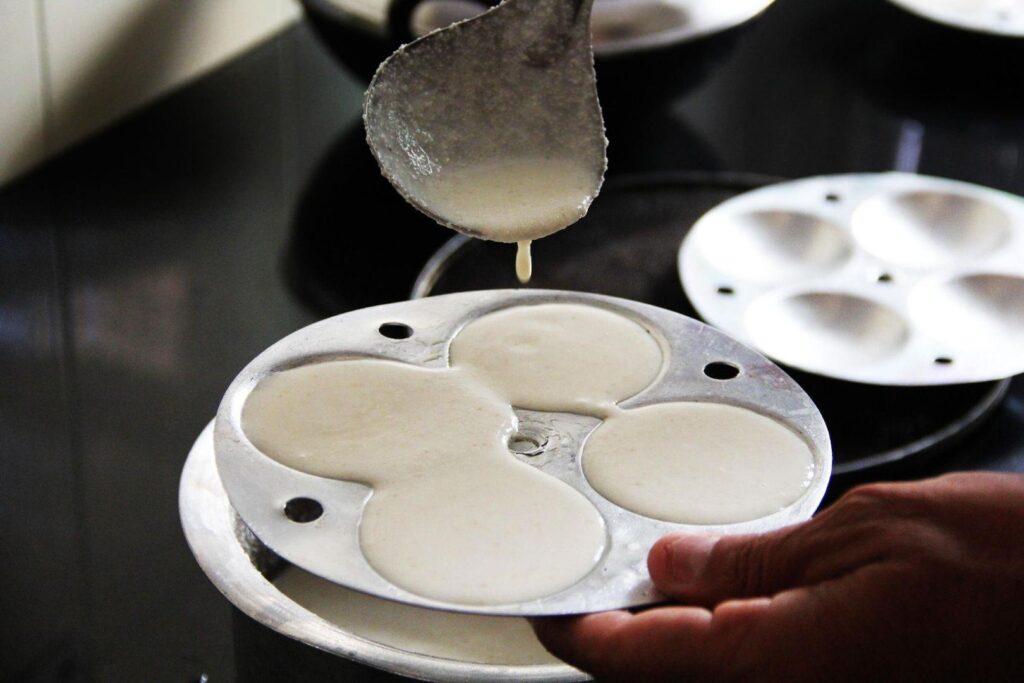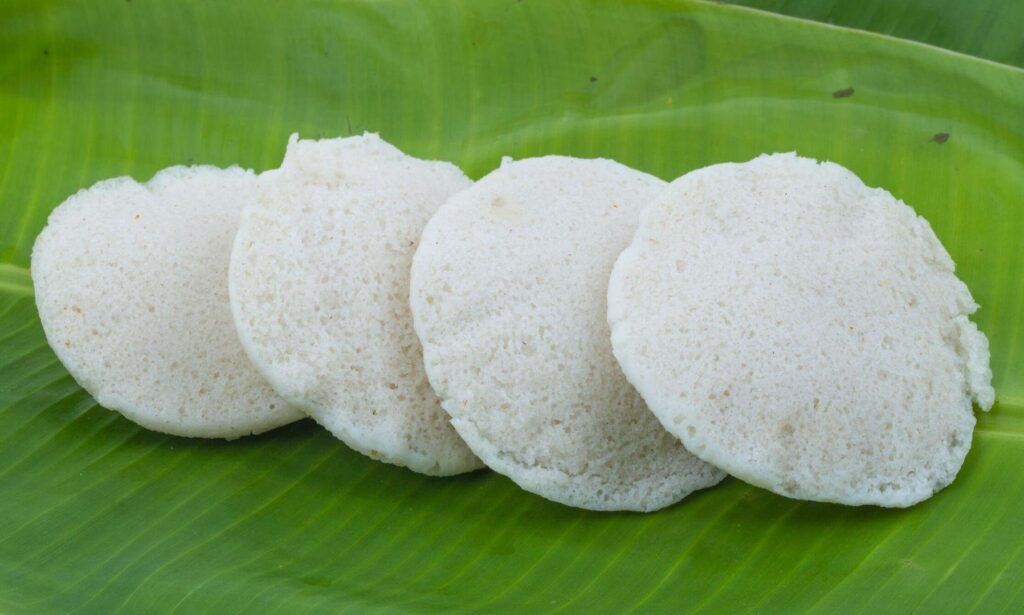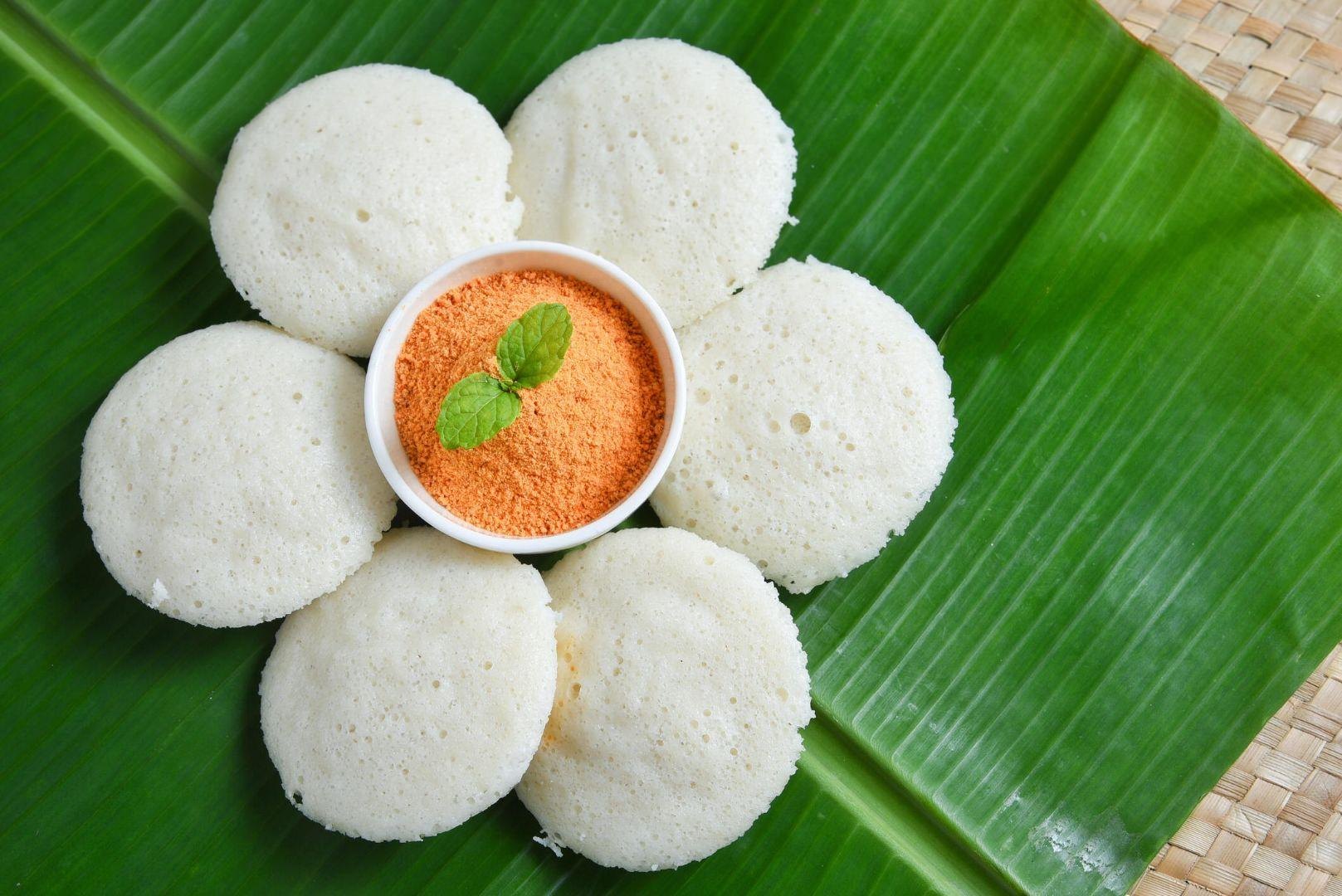Cooking idli recipe is the identity of South Indian meal for the soft steamed rice cakes which are famous among lots of people. Being especially common in Tamil Nadu and Karnataka, this type of sari has recently become more famous in other regions due to its ease and universal use. With chutney and sambar, Idli is very light and so it is perfect breakfast food. Being an all time favourite it has been accepted with various modifications in the South Indian region and accepted beyond South India.
Why Idli is a Popular Breakfast Choice
Basically, idli is not just something that’s being consumed, it is a concept of a warm, healthy breakfast that spears the day. And for those who never want to skip their meals, especially the first one in the morning, this dish is one of the healthiest of them all since it is weightless yet very nutritious. From being eaten with sambar or chutney, its flexibility and health qualities are some of the few reasons anyone can ever ignore.
Table of Contents

List of Raw Materials Required for Making Traditional Idli Recipe
Before we can get to the cooking, however, some preliminary observations must be made about assembling the ingredients. I imagine that there is no elixir and magic in cooking idli as such, the measurements of rice and urad dal are decisive, and the quality of the raw material is primary.
Essential components for idli batter
- Rice: For the right texture use parboiled rice or idli rice if possible. Some even go further by adding a small portion of normal rice to the process in order gain the extra softness.
- Urad dal (Black gram lentils): This makes it the fluffy idli that it is when steamed up to completion.
- Fenugreek seeds: The former help in fermentation and the later impart a slightly sour taste to the batter.
- Salt: To taste.
Some Helpful Tricks That Will Give You Page Perfect Batter
- Use the best quality urad dal and rice that you get in the market.
- Grinding the batter should be for the right texture, it should be smooth neither too thick or too runny.
- The warmer the climate, fresh is pet much quicker as in this case batter ferments faster. If it is cold, they should be placed in a slightly warm area, for example in an oven with a light on.
HOW IDLIS ARE MADE – PART ONE: A Guide to Making Soft and Smooth Idlis
Soaking the Rice and Lentils
First, dash the rice and the urad dal with a rinser and wash properly. Boiled them in water for about 4-6 hours. It is also possible to sprout the seeds of fenugreek together with the dal.
Grinding the Batter
Pour out the water in which the dal and rice was soaked and start grinding the two singly. They are to be ground using a wet grinder or any high-speed blender. First, pound the urad dal or blend it to a soft, fluffy and light consistency paste. Next, the rice is ground until it gets to be quite gritty. Combine the two batters and put some salt then follow steps of beating air into the batter.
Learn About What Willemstad Beverages’ Fermentation Process Is
Fermentation is where the workings begin and that is all thanks to the producer yeast. After making the batter, let it stand under a warm environment for instance overnight to rise or ferment. Aspiring to triple in volume, the batter has to become light and emit the aroma that corresponds to the type of beer that had been used.

Steaming the Idlis
Here is a pleasant surprise for you to make Idli: Place water in a steamer and boil. Although, before placing them into the idli molds make sure to grease them well with oil then pour the fermented idli batter into these molds. After the water is boiling and forming rolling movement, gently put the idli stand into the pan. Place the lids back onto the steamer and let the idlis steamed for 10-15 minutes with medium heat. It’s ready when a toothpick poked in the middle of the idlis will come out clean and to best serve and enjoy the idlis is hot. Yes, try out this classic Idli Recipe; it is delicious to the taste.
How to Know When Your Idlis Are Done
Wondering how to tell if your idlis are ready? It’s simple!
Texture, Color, and Aroma
Idli which is an ideal breakfast dish of southern India should be soft, fluffy and if pressed with your fingertips should bounce back.It should have a creamy white colour and a gentle pleasant fragranced smell.To determine whether they are ready or not, stab the center with a skewer or spoon— if it comes out clean, then they are.It is for this reason that we have a balance of texture, color and aromas for the meal we choose to take.This done with an idli recipe makes food a lot more enjoyable for breakfast which makes idli a great breakfast meal.
Serving Suggestions for Idlis
Most people commonly think of idli as a plain dish and do not realize the numerous taste variations that can be had when accompanied with the appropriate side dishes. An idli recipe that can popularize this simple South Indian dish could turn it from the usual common food into a delicious delicacy. The right side dishes however, will turn even a simple idli into a gourmet treat that gives diners the true taste of the region’s cuisine.
Popular Side Dishes: Sambar and Coconut Chutney
Idli recipe is incomplete without sambar, a dish similar to vegetable stew with lentils and taste slightly spicy and tangy and coconut chutney. These sides complement each other and the softness of idli while adding burst of flavours to you plate.
Innovative Ways to Serve Idli
Looking to shake things up? You can try podi idli – idli tossed in spiced powder and ghee; idli upma – crumbled idli stir fried with spices; or idli sandwiches – use idli as the buns!

Foods and Their Health Benefits: Idlis
While they are delicious, they also happen to be highly beneficial for the health of idlis consumers.
Idlis as a Low Calories and Nutrient Rich Breakfast
Based on the analysis – idlis are low in calories; they are steamed products, which are not fried – and is a better lightweight breakfast choice compared to other breakfast products which are very heavy on the stomach. Even though they aren’t categorized as calorie shifting foods, the foods offer proteins and carbohydrates that help to sustain morning energy without feeling too heavy. The idli recipe is perfect for a person who wants a filling meal that does not lazy around during the morning hours. This is a very basic meal that may also be a good way to kick off your morning and do you some good.
Advantages of the Gut Health due to Fermentation
The idlis again recorded low glycemic index due to the fermentation process in an idli recipe which is beneficial for stomach related issues. Already during the fermentation process the formation of probiotics enhances the gut health decreasing the experience of such things as bloating or discomfort. That makes idlis suitable for anyone who wishes to have a lighter on the stomach not to mention, stomach friendly. Consumption of idlis will prove beneficial to ones digestion and especially so to those with sensitivities to digestion. You should include an idli recipe in your daily diet since it is easy on the digestive system, and it is healthy to the body.
Deepening the view of some crucial errors to avoid when making Idlis
Preparing idlis probably look simple but can result to flat or hard idlis through some follwed mistakes.
- Not fermenting the batter long enough: This will lead to the soft and porous idlis with less gaps or porous in nature So this will result in dense idlis.
- Overfilling the molds: The ideal space for steaming is required by batter to make enough room for it to rise as it steams.
- Steaming for a long period of time: This process can make the idlis dry.
These are some common mistakes which when avoided can help you have those perfect, soft and fluffy idlis.
Conclusion
While practicing on the way of making of idlis may take a while, the effort employed is worthwhile in the end. In fact, I have been able to learn that idlis, no matter how they are prepared, make great meals whether when eaten in the morning, afternoon or even in the evening. In addition, they make excellent use where one is in a position to demonstrate his or her culinary abilities to friends and family!
FAQ’s
1. I had idli batter which I prepared some days before and I wondered why my idli batter did not rise?
This may have been due to a cold environment making the batter not to ferment well. Perhaps do better and try warming it the next time.
2. Is there any way to substitute wet grinder by normal blender?
Yes, but make sure that you fold the ingredients with the batter in portions because it produces a better batter.
3. Can fermented batter be stored for some time?
Such a batter can be easily kept in the refrigerator and used for up to 72 hours or even 4 days.
4. Is it possible to make idlis with brown rice?
Yes, but expect that the idli rice to have more texture than the normal idli rice used in preparing the idlis.
5. What if I don’t have a idli steamer at home you might be wondering?
You do not necessarily require a pressure cooker with the whistle which is useful for indicating pressure inside or a large pot with a steaming rack!
Enjoy your homemade idlis!

